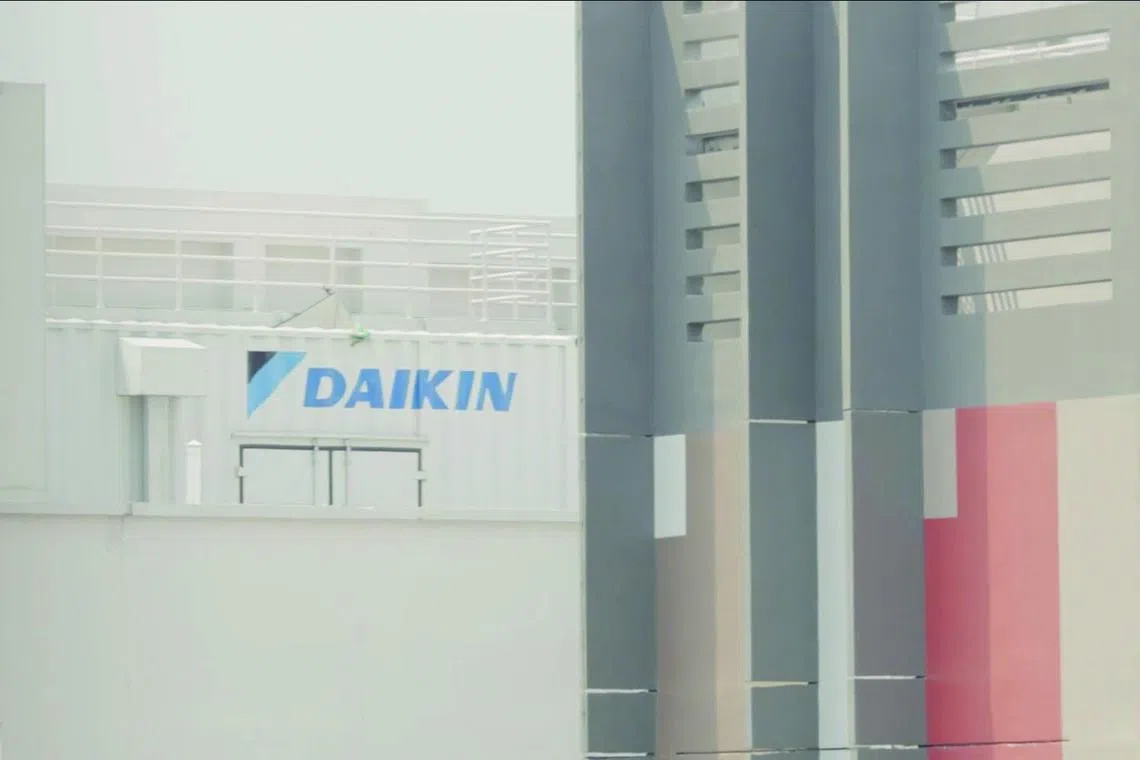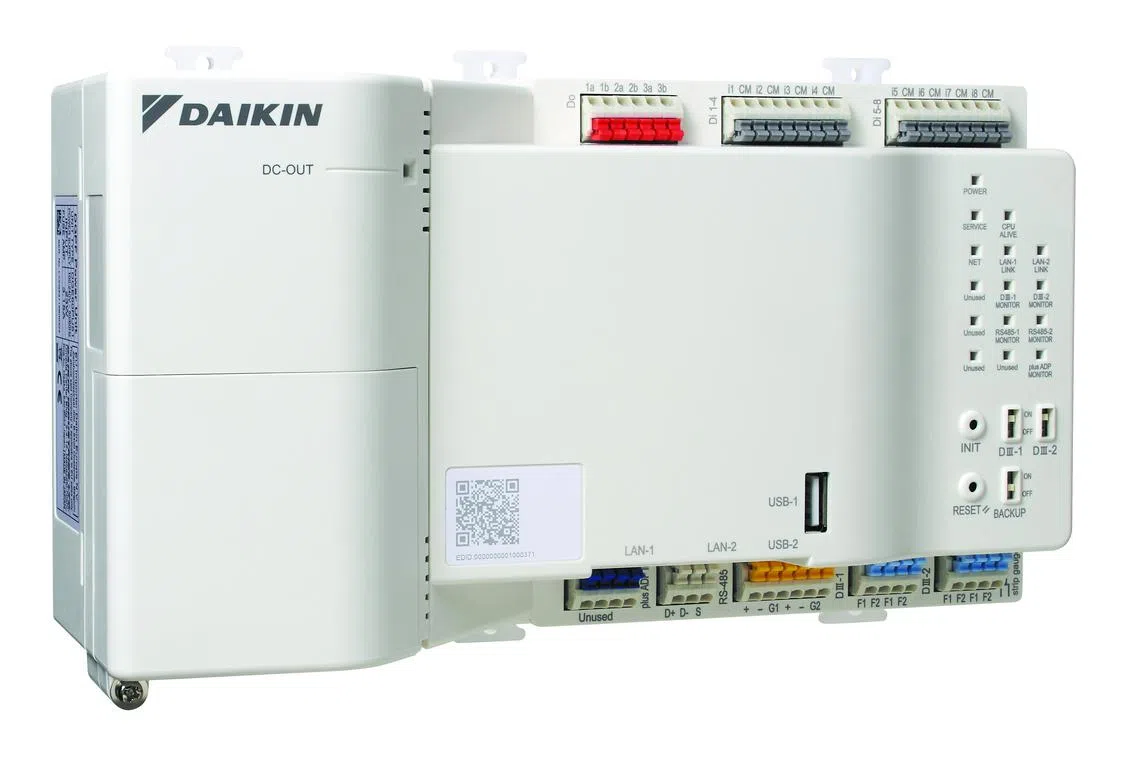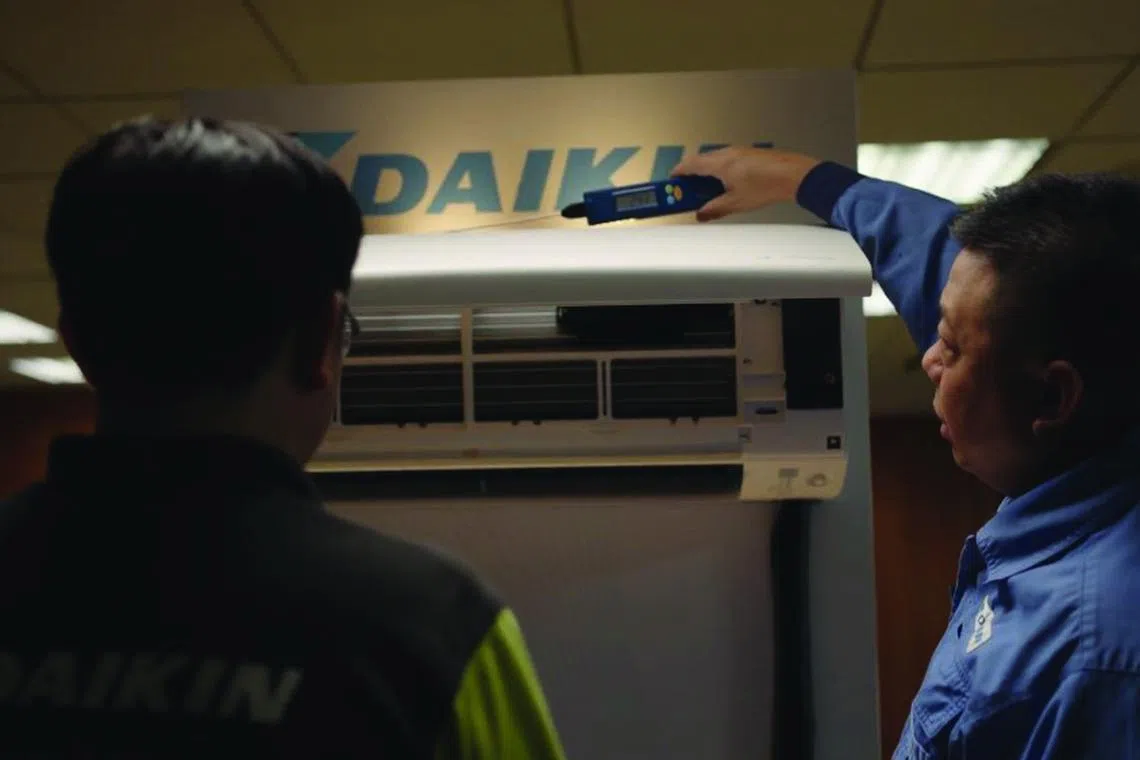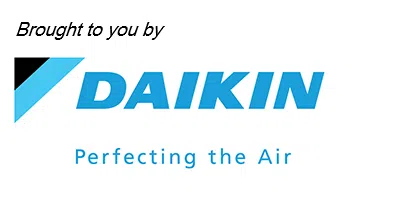Smarter cooling systems for sustainable living
Daikin Singapore is helping shape the future of sustainable living through intelligent climate solutions that meet the needs of a warming world
DAIKIN has played a long-standing role in shaping Singapore’s built environment, with a presence that spans residential, commercial, and industrial developments since 1968. Since entering the market, the Japanese air-conditioning leader has been a constant fixture in homes, offices and industrial sites across the island. But its ambitions today extend far beyond keeping rooms cool.
“Our vision is to be a total solutions provider. That means going beyond standalone products and seamlessly integrating air conditioning, ventilation, air purification, and smart control technologies to create healthier, more sustainable living and working environments,” says Donovan Chua, Managing Director at Daikin Airconditioning (Singapore). The company is part of Daikin Industries Ltd, the world’s leading air conditioning company with a history of innovation that dates back to 1924.
Over the decades, Daikin Singapore has evolved in step with the country’s transformation. From providing basic cooling to introducing the first multi-split air-conditioning systems in homes, the company has consistently anticipated the changing demands of the market.
In 1986, it launched the world’s first Variable Refrigerant Volume (VRV®) system in Singapore, a game-changer in energy-efficient cooling for commercial buildings. Today, Daikin’s role has expanded to include building management platforms, indoor air quality innovations, and integrated smart systems, all aligned with Singapore’s vision for a green, digital, and sustainable future.
District cooling for the next generation
Daikin is also a key player in two district cooling projects in Singapore: Tengah town and STMicroelectronics’ TechnoPark in Ang Mo Kio. In Tengah, the country’s first smart and sustainable town, the company has implemented centralised cooling across an entire residential district, a first-of-its-kind model that dramatically improves energy efficiency while supporting Singapore’s Green Plan 2030.

At TechnoPark, a joint venture with SP Group is developing Singapore’s largest industrial district cooling system. The project, designed to serve the needs of a global semiconductor company, showcases how cooling infrastructure can scale sustainably with industrial demand.
These projects reflect a significant shift from traditional air-conditioning systems toward scalable, energy-efficient infrastructure that supports Singapore’s long-term sustainability goals. By centralising cooling across entire residential or industrial developments, they improve energy performance while reducing emissions. This approach also supports operational efficiency, enhances reliability, and helps realise a broader vision for greener, smarter urban environments.
A partner in policy and innovation
One key feature of Daikin’s approach in Singapore is its close collaboration with national agencies. The company has worked alongside the Building and Construction Authority (BCA) and the National Environment Agency (NEA) to align its technologies with national priorities in energy efficiency, environmental sustainability, and indoor air quality.
With BCA, Daikin contributes to the push for greener buildings through its active participation in the Green Mark certification programme and the development of Super Low Energy buildings. This includes deploying its advanced VRV systems and integrated solutions that meet high sustainability benchmarks.
Meanwhile, the company’s work with NEA includes support for the Energy Efficiency Fund, which helps SMEs adopt greener air-conditioning, as well as its involvement in refrigerant transition discussions to ensuring compliance while helping the industry move towards more climate-friendly alternatives.
“These collaborations reflect a shared commitment to long-term environmental goals, and we believe that public-private synergy is key to accelerating Singapore’s green transition,” explains Chua.
The success of these collaborations highlights how regulatory alignment and technical innovation can reinforce one another. As environmental standards tighten and consumer expectations rise, the integration of policy and industry insight ensures that new solutions are both practical and scalable.
Smarter systems for everyday comfort
The next frontier for Daikin is digital integration. Its smart control platforms, such as the Reiri IoT system and Marutto dashboard, allow building owners to monitor, automate, and optimise their cooling systems remotely.

“We are leveraging data analytics, remote monitoring platforms, and smart maintenance systems to empower customers with better control, visibility, and energy optimisation capabilities,” says Chua. “This approach provides customers with end-to-end comfort, better energy performance, and peace of mind.”
For homeowners, the appeal of Daikin’s solutions lies in convenience and customisation. Smart controls allow users to schedule cooling based on daily routines or monitor energy consumption through mobile apps, creating more informed and responsible energy behaviour. This is especially relevant in a city like Singapore, where high humidity and year-round heat make air-conditioning a daily necessity. Residential customers also benefit from features like 3D airflow technology, which enhances indoor air circulation and comfort.
Daikin’s emphasis on air quality is particularly timely. At a time when climate extremes and wellness concerns are changing expectations for indoor environments, consumers are demanding more from the spaces they live and work in. The company’s Streamer Technology, which purifies air by decomposing harmful substances such as viruses and allergens, is one example of how climate control can contribute to wellness.
Indoor air quality is also increasingly recognised as key to public health, particularly in dense cities. Poor air circulation, high humidity, and pollutant build-up can negatively impact productivity, sleep, and general well-being. As such, integrated solutions that control not only temperature but also humidity and airborne contaminants are becoming increasingly important.
Building a greener culture
Internally, Daikin Singapore is cultivating a workforce that is agile and future-ready. The company invests in leadership training, technical upskilling, and continual learning to prepare employees for a rapidly evolving industry.

This people-first approach reflects a broader cultural shift at Daikin. Once focused solely on hardware, the company today sees its mission as environmental and societal as much as technical.
As Singapore moves towards its net-zero ambitions, Daikin intends to stay ahead of the curve. Its roadmap includes ongoing R&D in inverter and heat pump technology, deployment of low-GWP refrigerants, and further expansion into smart city infrastructure.
Chua is optimistic about the future. “What excites me is the convergence of three major forces – sustainability, digitalisation, and urban well-being – all of which position cooling as a key enabler of the future city,” he says.
“I’m also particularly excited about how cooling will contribute to wellness – not just comfort. Air quality, thermal balance, and quiet operation will all play a role in healthier living environments.”
In its own quiet way, the company is doing more than air-conditioning Singapore. It is helping to reimagine how comfort, efficiency, and environmental stewardship can co-exist in the cities of tomorrow.
Supporting Singapore’s green plan 2030
How Daikin is contributing to national climate and sustainability targets
- Greener refrigerants First in Singapore to introduce R32 refrigerant systems, reducing carbon emissions and improving energy efficiency.
- District cooling at scale Implementing centralised systems in Tengah and TechnoPark to deliver large-scale, low-carbon cooling infrastructure.
- Smart technology integration Advancing digital platforms like Reiri and Marutto to optimise energy use and enable real-time system management.
- Collaboration with Singapore’s Building Construction Authority and National Environment Agency Supporting the Green Mark programme, Super Low Energy buildings, and refrigerant transition policies in partnership with key government agencies.

- Indoor air quality innovation Rolling out Streamer Technology to promote healthier environments in homes, offices, and public buildings.
Milestones in innovation
1968: Daikin enters the Singapore market
1986: Launch of the world’s first VRV system
2012 (in Japan): Introduction of R32 refrigerant systems, a more environmentally friendly alternative
2020: Launch of district cooling project at Tengah
2022 (operational in 2025): JV with SP Group for industrial district cooling at TechnoPark

Copyright SPH Media. All rights reserved.

